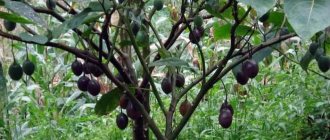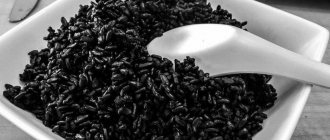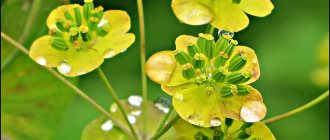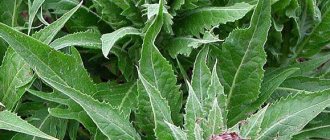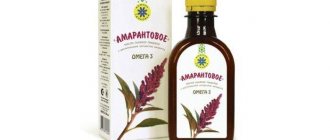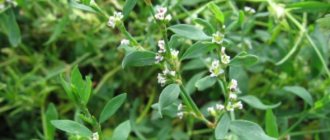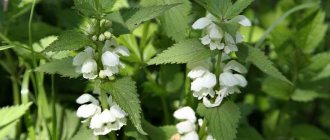The black algae is one of the representatives of the genus Belokodrennik, which belongs to the Lamiaceae family. This genus includes more than 30 species, but of these, only the black algae is used for medicinal purposes. The beneficial properties of this plant have been known for a long time, but for some reason it is not as popular as some other medicinal plants. It is used mainly to treat certain musculoskeletal diseases and neurological disorders. Black algae grows naturally in most of Europe, North Africa, Western and Central Asia, Kazakhstan, central Russia and the Caucasus. In addition to the official generic name, the plant has quite a lot of folk names: weed weed, nigella, dogmint, stone grass, rattlegrass, dead nettle, jointweed, stinking horehound, etc.
Botanical description
Black thyme is a perennial herbaceous weed. It can be found in ruins, wastelands, cliffs, near houses, near roads, in forest clearings, in river valleys and ditches. Grows well in partial shade or sunny areas with warm and temperate climates. Prefers nitrogen-rich, moist and loose soils. Reproduction is carried out by dividing the bush or by seeds; self-sowing is possible in suitable conditions.
Important: When it gets onto agricultural land, the black horned grass multiplies very quickly, sometimes completely suppressing the growth of cultivated crops.
The root system is powerful, tap-type, fibrous, and well developed. It grows into the soil to a depth of 50 cm, which allows the plant to survive during periods of drought. The rhizome is creeping, short.
The stem is erect, tetrahedral in cross section, reaching a height of 50 to 150 cm. It can be simple, but more often it has branches, often from the very base, and is covered with soft hairs.
The leaf arrangement is opposite, the leaves are short-petiolate. The leaf blade is oblong-ovate or ovoid in shape, 2.5–8 cm long and 3–6 cm wide. The apices of the leaves are pointed, the edges are jagged or jagged-serrate. The leaves are dark green on top, lighter on the underside, and have pubescence on both sides.
Black sage blooms throughout the summer. The flowers are small, bisexual, pollinated mainly by bees. They are located at the tops of the stems, collected in dense single-sided whorls located in the axils of the leaves, and have two bracts. The calyx is green with five brown-violet teeth, tubular-funnel-shaped, 6–7 mm in size, densely pubescent along prominent veins. The corolla is two-lipped (9–13 mm long), pink-violet in color, with white spots on the lower lip. The upper lip is concave, notched, covered with hairs, the lower one consists of three lobes: the middle lobe is broadly obovate, notched, the lateral lobes are oblong-ovate.
Interesting: During flowering, the plant acquires a very unpleasant peculiar odor, reminiscent of the smell of mold or sweat, and therefore the plant received a number of not very euphonious folk names.
The fruits are dark brown multi-nuts that appear from July to October. When ripe, they break into four nuts.
Description
For a long time I had no desire to identify this plant. Firstly, it (white urchin) grows in continuous thickets, like nettles. It is often confused with nettle (until the moment of flowering); there is certainly a similarity, at least in the leaves. But with the appearance of flowers, you can immediately see who is who. And secondly, the whole appearance of the whiteweed is somehow withered: the leaves are turned up and down, and the color of the stems, calyxes and even leaves becomes brownish-purple. In addition, there are many herbs similar to it. Of those that I know, we can distinguish them by the following characteristics: mottled jasmine (strongly convex upper lip and single-lobed lower lip, the lateral ones are hardly noticeable), tuber-bearing zopnik (awl-like processes protrude between the teeth of the calyx), medicinal cap (long bare peduncle, spike-shaped inflorescence and large leaves ), marsh chickweed (flower whorls are collected at the top).
Flowers
The flowers are collected in axillary (in the axils of the leaves) thick semi-umbrellas.
Blooms from June to September. The outside of the corolla is hairy, two-lipped, pink-violet, the flowers are about 1.5 cm long. The upper lip of the corolla is spoon-shaped, with a small hollow. Lower lip with white stripes.
There are four stamens, they protrude far from the corolla tube and are hidden under the upper lip, where the bifid pistil is also located. The lower lip of the corolla has three developed lobes, without horn-shaped appendages, with a heart-shaped notch on the middle lobe.
There is no transverse outgrowth on the top of the calyx. The calyx is funnel-shaped, not bilabial, with 5 equal teeth, on the calyx tube there are 10 veins (5 convex and 5 depressed), pubescent along the outer veins. The calyx is shorter than the corolla, the teeth of the calyx are without grooves, ending in spine-like spines. The bracts are soft, awl-shaped (look at the base of the calyx). The older the plant, the more purple the calyx turns.
Leaves
The leaves are entire, ovate, about 5 cm long, serrated along the edge. The upper surface of the leaf is covered with hairs. Some leaves gradually turn purple from dark green.
On the stem, the leaves are located oppositely, the leaf blades are lowered down.
Stem
The leaves sit in pairs on the stem, and flowers grow in the axils of the leaves.
The stem is straight, up to 1 meter tall.
The stem is abundantly pubescent. As it grows, the color of the stem changes from green to brown or purple.
Fruit
…
Habitat
Black algae grows along roads and railways, on roadside lawns, and in vacant lots. It is constantly found within the city.
Application
The herb black cinnamon is used as a sedative.
More photos:
See what else needs to be photographed for this article.In general, you need to do the following: Add fruit
Chemical composition
The aerial parts of the black cucumber are used as medicinal raw materials. However, their full chemical composition is currently not fully understood. The following were found in the plant:
- organic acids (salicylic, malic, chlorogenic, caffeic);
- tannins;
- iridoids;
- alkaloids;
- pectins;
- flavonoids (apigenin, luteolin, acacetin);
- essential oils;
- vitamins (vitamins C and group B);
- minerals (Mg, Mn, B, Zn, etc.).
The chemical composition of cinnamon
The leaves, stem and flowers are used to make the medicine. The use of cinnamon in medicine is due to its chemical composition, which has not been fully studied to date. It is known that the aerial parts contain:
- vitamins;
- flavonoids;
- minerals;
- pectins;
- tannins;
- tannin;
- alkaloids;
- phenolic acids;
- essential oils;
- organic acids.
The composition and pharmacological properties for use in folk medicine are of great importance. Despite its unpleasant odor, dognip has been used by many herbalists and healers for many decades.
Medicinal properties
Preparations from black thyme have the following therapeutic effects:
- sedative;
- antioxidant;
- antispasmodic;
- diuretic;
- anti-inflammatory;
- astringent;
- antiseptic.
The medicinal properties of black cinnamon are often used for diseases of the nervous system. It helps with neuroses, insomnia, migraines, increased excitability, nervous stress, convulsions, depression, and relieves anxiety and fear. Products based on it are effective for nausea and vomiting caused by nervous disorders, impaired motor coordination, and premenstrual and menopausal syndrome. The sedative effect of motherwort on the nervous system is comparable to motherwort and valerian. When taken together with other sedatives, an increase in their sedative effect may be observed.
In folk medicine, cinnamon is used externally in the form of baths and lotions for degenerative and inflammatory diseases of the joints, muscle pain, sciatica, and rheumatism. It helps with edema and arterial hypertension, accelerates wound healing. Thanks to its antispasmodic effect, it is effective for bronchitis, severe cough, bronchial asthma, as well as for diseases of the gastrointestinal tract and genitourinary system. It is used to treat colds and skin diseases. Gargling and rubbing the skin with a decoction of the plant helps relieve inflammation and irritation, and its consumption internally has a general strengthening effect, improves memory, attention, mental performance and mental endurance.
Important: The not very widespread use of black cinnamon in folk medicine compared to other medicinal herbs is due to the fact that the products obtained from it have a rather unpleasant taste and smell.
Medicinal properties of cinnamon
Previously, cinnamon was used only in folk medicine, but today scientific medicine has turned its attention to it
– it has too many medicinal properties to ignore.
It normalizes the functioning of the nervous system, has antiarrhythmic, tranquilizing, antispasmodic, sedative, antiseptic, antiemetic and diuretic effects. In this regard, cinnamon is used for many and varied diseases
: muscle and joint pain, arthritis and arthrosis, rheumatism, spasms of various types - for example, chest pain, high blood pressure, swelling, coughing attacks (including whooping cough ), non-healing wounds.
However, most often it is recommended to use it for neurological diseases, especially those caused by stress: for neurosis, insomnia, increased excitability, nausea and vomiting of a nervous nature, for impaired coordination of movements; as a sedative for painful menstruation and menopausal syndrome.
But cinnamon is especially famous for the fact that it can be used to successfully treat depression.
: after all, it is caused not just by a bad mood, but by a lack of certain substances in brain cells. In folk medicine in former times, an aqueous infusion of cinnamon was used for these purposes for a long time.
It is believed that milkweed is similar in properties to motherwort and valerian
, therefore official medicine recommends using it as a substitute. In fact, the properties of this plant in the treatment of nervous diseases are more pronounced, since neither valerian nor motherwort bring such relief for depressive conditions.
Procurement of raw materials
To prepare medicines in folk medicine, the upper parts of the plant, which include flowers and small leaves, are used. They are collected in the summer during the flowering period, when the maximum concentrations of useful substances accumulate in the pine tree. To do this, the tops are carefully cut off with scissors, cleaned of foreign impurities, and then dried in the shade outdoors or in a room with good ventilation, spread in a thin layer on paper or natural cotton fabric. The prepared raw materials can be stored and used to obtain medicines for two years.
Methods of application
Decoctions, water infusions and alcohol tinctures are prepared from black thyme. Remedies from it are taken both separately and in combinations with other medicinal herbs.
Infusion for depression and neuroses
Mix 20 g of St. John's wort flowers, 20 g of black horned grass, 20 g of horned lamb's grass, 10 g of rosemary flowers and 5 g of lavender herb. The resulting collection (1 tablespoon) is poured with a glass of boiling water, left for 1 hour and filtered. Take 60 ml three times a day.
Infusion for spasmodic cough and spasms in the gastrointestinal tract
The tops of the white urchin along with the flowers (4 - 5 tsp) are poured with a liter of boiling water and allowed to brew for 10 minutes, after which they are filtered and consumed one cup before each meal (3 times).
Baths for rheumatism, joint and muscle pain
Add 2 liters of boiling water to 100 g of cinnamon grass and boil the resulting mixture over low heat for 10 minutes. Leave for 1 hour, filter and pour into a bath with a water temperature of about 40 °C. Take such baths for 25 minutes 2 – 3 times a week.
Alcohol tincture with sedative and analgesic effects
Chopped dry herb (3 tablespoons) is poured with ½ liter of vodka or alcohol and left for 14 days. After time, filter the tincture and take 30 drops twice a day, mixing with ¼ glass of water.
Compresses for sciatica and joint pain
Dried herb (about 3 tablespoons) is wrapped in several layers of gauze. Then pour boiling water over the resulting gauze envelopes and apply them to the sore spots, wrapping the top with cling film and a towel. For joint pain, you can also apply compresses with an alcohol tincture of the plant.
